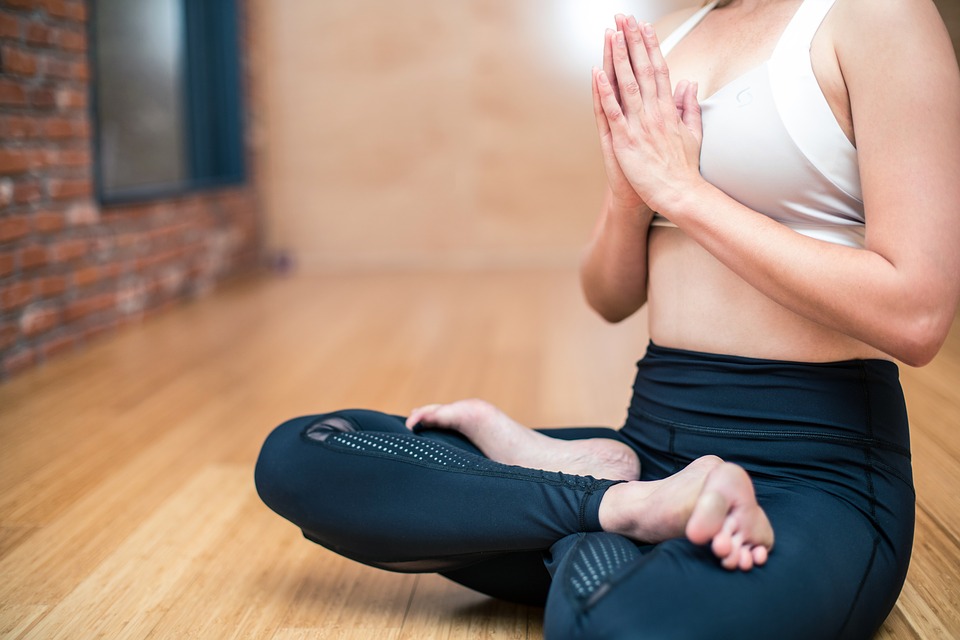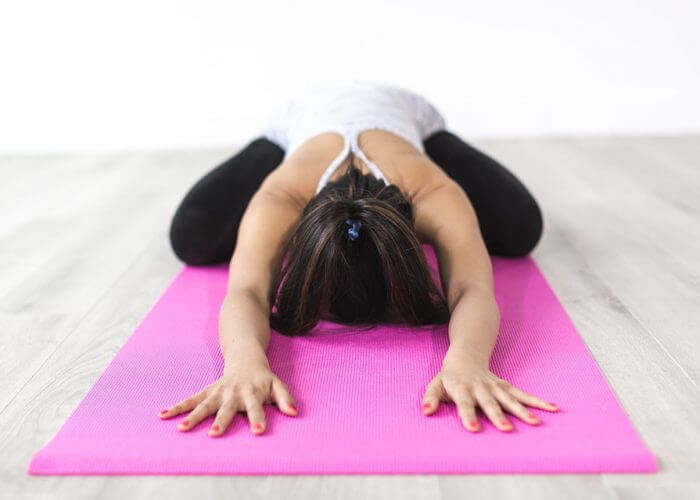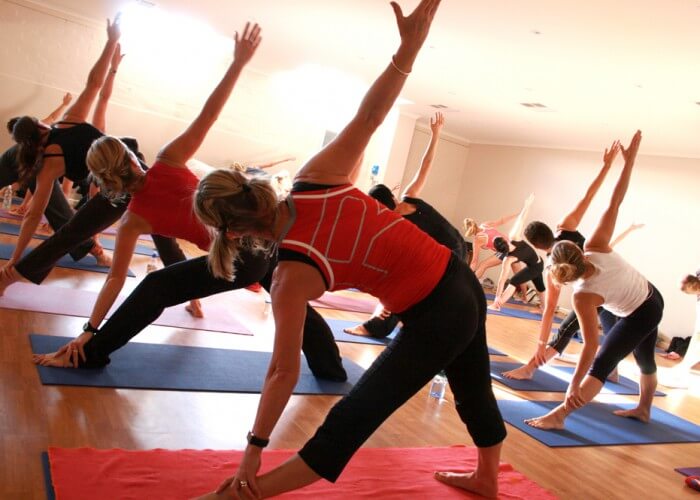Why is Yoga Beneficial for Swimmers?

Bringing back this article by Kaylie Williams, Swimming World College Intern. You can do yoga at home! Don’t need any fancy gear – just some sort of stretching mat or open space on the floor to get started.
Have you ever neglected the cool down stretching after practice and ended up regretting it the next day? Have you wondered why your flexibility may be decreasing as the season progresses? Have you ever felt so anxious before a race that you got into your own head and hindered your performance? If so, then maybe you need to integrate yoga into your regular swimming workout!
How Can Yoga Help?
Yoga is much more than meets the eye. Although it is a combination of mediation and stretching, it has many more benefits beyond mental health and relaxation for swimmers. Compared to lifting weights and extreme cardio workouts that some athletic programs are adopting, yoga provides many unseen benefits such as improving flexibility, teaching you to stretch completely, improving overall strength, understanding your body and learning to coordinate your breathing with your body movements.
Improves Flexibility and Teaches Correct Stretching Techniques

Photo Courtesy: Pixabay
All swimmers know that stretching correctly and thoroughly is necessary to maintain flexibility, avoid injury and to help your body recover. However, not all swimmers follow through. Incorporating yoga into your daily or weekly workouts will encourage thorough stretching that a swimmer’s muscles desperately need. The various strokes within swimming repeatedly work the same muscle groups, causing the muscles to become fatigued, tight and knotty if not properly stretched before and after a workout.
This causes a slew of problems, as the tight muscles become more and more limited in their range of motion, forcing the other local muscles in the same group to compensate and complete the movement. In other words, limited muscle movement will cause more injury and build unnecessary tension in other surrounding muscles. Yoga can help relieve built-up tension through a combination of static and dynamic stretches that lengthen the muscle tissue and improve the strength and integrity of the exhausted muscles and joints.
Improves Overall Strength

Photo Courtesy: Local Fitness
Yoga is very different from lifting weights in terms of building strength, but the kinds of strength that it does focus on are directly transferable to swimming. In many athletic programs, athletes are lifting weights and downing protein shakes to build strength; however, all that is necessary to build more functional strength is your own body weight and a yoga mat.
Ideally, a swimming workout should include a dryland portion as well as the usual in-pool session. The dryland portion is very important; not only do swimmers need to stretch and work other muscle groups, but they also must maintain bone density and overall bone and joint health. Since swimming is not a weight-bearing activity, it can lead to a decrease in bone density if not balanced correctly with a weight-bearing activity.
In swimming, there is no impact on the bones and joints to encourage the growth of new bone cells. Repeated impact on the bones will, over time, force them to strengthen on their own and grow new cells. Yoga is the perfect activity to combine with swimming, because it forces you to hold your body weight in various positions, challenging the stabilizer and core muscles that are essential in swimming. Furthermore, it develops muscular endurance, as most of these poses are held for an interval that pushes the capabilities of your strength. All of the strength gained from performing various yoga poses is not only functional in daily life but also transferable to swimming.
Helps to Understand Body Movement and Breathing Coordination
Besides the various ways that yoga can make you stronger overall, it can also help you develop a sense of body awareness and control while also improving your breathing coordination. This, in turn, transfers over to swimming, because every movement swimmers make in the water needs to be a conscious decision that focuses on body position and angle. Likewise, yoga prompts you to inhale and exhale on command, or “pull your belly button to your spine,” all the while performing a stretch and keeping your form. Learning to breathe in coordination with your body movements will help keep you relaxed while working out, which can directly improve the efficiency of your stroke, allowing you to maintain the effort with ease.
Improves Overall Mental Health

Photo Courtesy: Pexels
Yoga is known to have outstanding effects on a person’s mental health. The combination of relaxation, meditation and stretching does wonders for people who are stressed or have anxiety. Swimmers fall into this category as well. Many swimmers experience huge anxiety before their meets and individual races, not to mention the physical stress that swimming has on the body. Incorporating yoga into your routine will help you better regulate your emotions and stress while improving your mood. In terms of how yoga can directly improve swimming performance, it helps swimmers relax and practice visualization.
It helps to be prepared, whether physically or psychologically, and yoga can help with both of these aspects.
All swimming and dryland training and instruction should be performed under the supervision of a qualified coach or instructor, and in circumstances that ensure the safety of participants.




Very well written Kaylie ?
Maribel Torres Soto
Ellisia Baxter